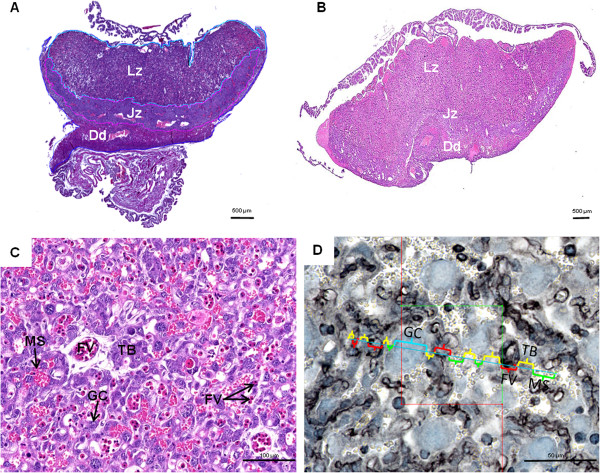Figure 1.
Placental structure. (A) Haematoxylin and eosin staining of Necromys lasiurus placenta at late gestation. The labyrinth zone, junctional zone and decidua are indicated by Lz, Jz, and Dd, respectively. (B) Haematoxylin and eosin staining of Mus musculus domesticus placenta at late gestation. (C) Haematoxylin and eosin staining of N. lasiurus labyrinth at early gestation. Labyrinthine trophoblastic layer (TB) in contact with maternal blood is indicated. Fetal vessels (FV) are distinguishable by their erythroblasts content whereas maternal space (MS) contained erythrocytes. Sinusoidal giant cells (GC) characterized by a large and dense nuclei are also mentioned. (D) Immunohistochemistry of vimentin on N. lasiurus placenta at late gestation and schematic diagram with linear dipole probes used for the One stop stereology. Positive staining is detected in the endothelium of vessel indicating the presence of fetal blood system (FV), whereas labyrinthine trophoblast borders (TB) of the maternal blood spaces (MS) and sinusoidal giant cells (GC) were vimentin-negative. In the image, the space occupied by each cell type is identified within a colorful parenthesis.

